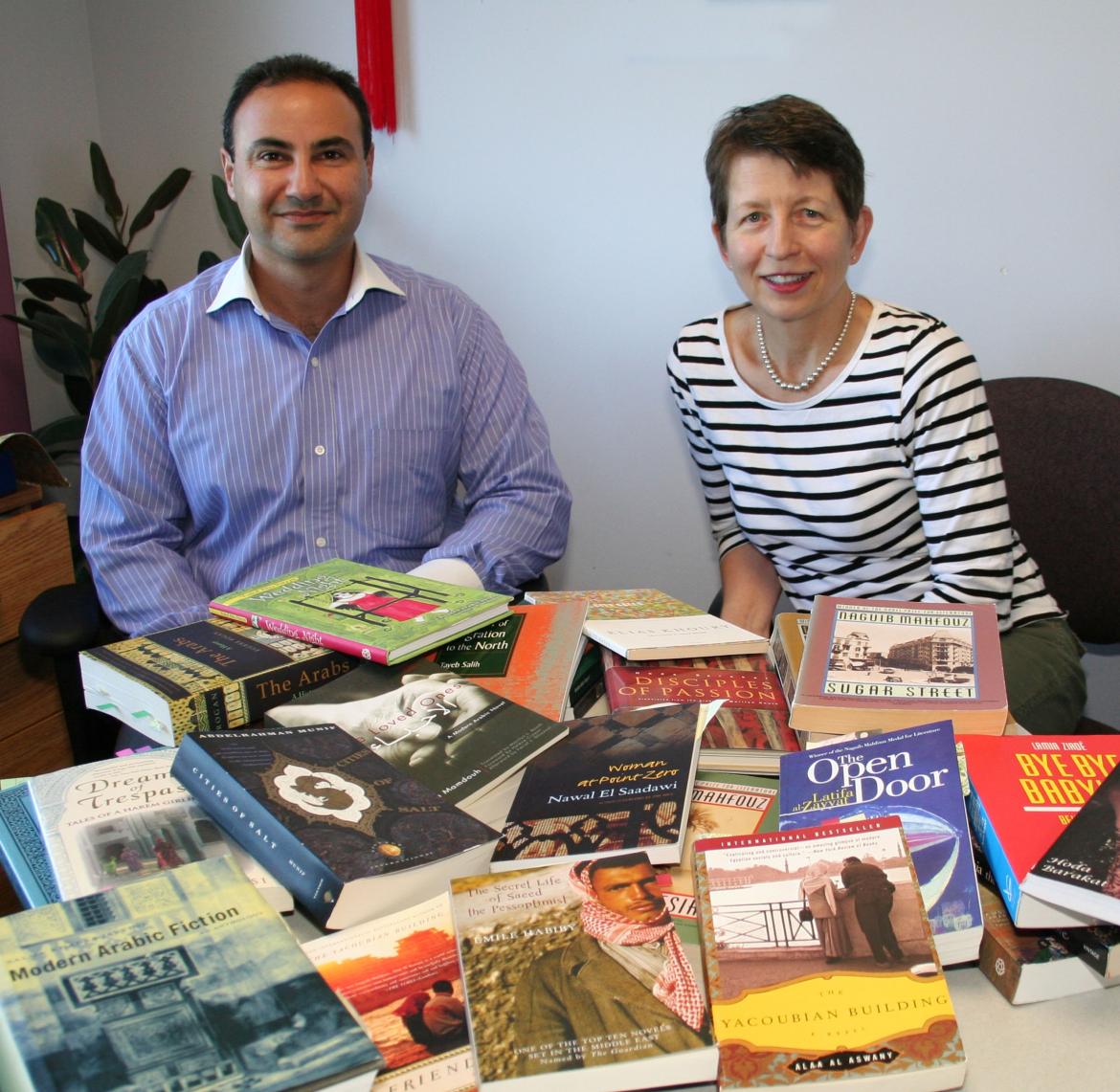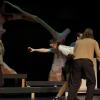
August 24, 2012 - 8:45am
English Professor Katharina Rout had little background in Arabic literature when she proposed it as the theme for a fourth-year Vancouver Island University comparative literature course.
“Initially, I thought we needed a course on Modern Arabic Fiction because, collectively, we know too little about the Arab world and because Canadian students would benefit from the insights into Arab culture and the daily life of Arabs that literature can provide—insights very different from those we get in the news media,” says Rout.
“I thought it would be great if we all learned more – in particular given the public debate, the attitudes and the ignorance. I thought it would be very timely.”
The first offering of the course attracted a mix of domestic and international students—many from Arab countries. While there were some tense moments along the way, it turned into such a success that it will be repeated in 2013. Rout, and her collaborator for the course Mohammed Hawamdeh, VIU’s International Students Liaison, will also share their experiences in a presentation in November at the Canadian Bureau of International Education annual conference in Montreal.
“It was a tremendous opportunity to promote internationalization of our campus,” says Hawamdeh. “Everybody felt it was a good experience.”
Rout was attracted to Arabic fiction through the work of Egyptian novelist and playwright Naguib Mahfouz. His writings were included in a world literature course in which Rout focused on the novels of Nobel Laureates. “I read a huge stack of novels by Mahfouz and absolutely adored his work,” says Rout. “I was fascinated by his writing.”
It was well before the 2012 Arab Spring uprisings against authoritarian regimes but Rout’s interest continued to grow. She read a New Yorker magazine article that listed several authors from the Arab world who deserved more attention and Rout began to build a collection.
Initially, Rout had trouble attracting students. She suspects domestic students may not have felt qualified to delve into the writing of authors who were unfamiliar to them and international students may not have been aware of the content of English courses offered at the third-year and fourth-year levels.
Rout took matters into her own hands and created a poster that she displayed on and off campus. Enrolment got a big boost when Hawamdeh, who has a Jordanian background, volunteered to help with recruitment of international students and delivery of the course.
“Thanks to Mohammed’s promotion of the course to the Arab students on campus, several of them enrolled. Several more dropped by to participate and share their views of the literature and talk about their own experiences,” says Rout.
Rout and Hawamdeh knew that delivery of the course required a heightened sensitivity to the widely diverse perspectives of participants and they made a concerted effort to make sure that the viewpoints of each participant were acknowledged.
“We could never expect what was going to happen in class,” says Hawamdeh. “We didn’t know how it was going or where it was going. We had to be alert and sensitive to every word and notion and look that was made in class to maintain the right environment for learning.”
Rout pointed to the example of a student’s request to post a map of the region. It seemed straightforward at first but it raised questions about how borders depict the status of disputed regions.
Rout and Hawamdeh were aware that some domestic class members were affected by stereotypes and had suspicions that Arab students might feel sympathetic to autocratic regimes or Islamic extremists.
Rout and Hawamdeh were gratified that tension and suspicions that were evident early in the course were replaced with warmth and friendship.
“Sensitivities remained but you could see everybody developed an attitude: I want to contribute and make it work,” says Rout. “The class came to cultivate an attitude of mutual respect—in fact, ‘respect’ became one of the key concepts the Arab students used to explain their own culture and one of the key behaviours everyone worked hard to model in their contributions in the classroom.”
“When people decided to lower their barriers, get out of their trenches and reach out, they started to take on a positive approach,” says Hawamdeh.
Early in the course, Hawamdeh talked about the parallels in the “sibling” religions – Islam, Christianity and Judaism and pointed out how the Koran calls for equality of men and women.
There were also discussions about how citizens of a particular country may not adhere to the political stance of their leaders and how there are diverse views and ethnic groups throughout the Arab countries.
Rout and Hawamdeh could see students gain insights about the common ground they share as they explored Arab fiction.
“It was not a political science class or a history class but a comparative literature class. Literature is always about individual people and it breaks down stereotypes,” says Rout.
Stories that touch on the hardships of poverty, repressed sexuality, love and loss reveal traits that resonate with readers from widely different backgrounds.
Rout and Hawamdeh highly recommend The Yacoubian Building by Alaa Al Aswany as an introduction to contemporary Arab literature.
New Yorker writer Claudia Roth Pierpont describes that best-seller as a “skillful page-turner with a winning cast of characters [that] takes on the subjects of class oppression, government corruption, torture in prison, the rise of fundamentalism, and the Egyptian state’s propensity to push even profoundly decent but poor young men to religious extremism and, ultimately, to killing.”
(Pierpont’s New Yorker article is available online at: http://www.newyorker.com/arts/critics/books/2010/01/18/100118crbo_books_...)
“Every student had to read a book for a class presentation. And in every book there is a story that shows no matter where you live around the world, we share the same problems of everyday life,” says Hawamdeh.
Comments from participants in the class reflect students’ growing appreciation of Arab authors.
“Nothing about Arab literature is simple or one-dimensional; each story demands a relationship with the reader before it will reveal the subtle but powerful subtext,” wrote English major Gurbinder Mann.
“Reading is a form of communication and in no other time in history has the world become so small. We need to communicate with our neighbours and that is the only [way] war is either prevented or stopped.”
VIU multi-media graphic designer Linda Hildebrand took the course out of personal interest and says she appreciated the contributions made by Arab participants.
“Instead of studying a literature of another culture at arm's length, having members of that culture present made it authentic and easier to recognize that there are other experiences and points of view. It ought to be a requirement of everyone’s education--studying a very different culture with representatives of that culture."
Rout and Hawamdeh are eager to present the Arab literature course again and strengthen the collaboration between the International Education and Arts and Humanities departments at VIU. They also appreciate support from colleagues in VIU’s English Language Centre who participated in the class and supported English as a Second Language students who visited the class as guests and guest speakers.
Hawamdeh sees potential for further internationalization of the university with adapted programs in the fields of music, visual arts and culinary arts.
Tags: In the Community






